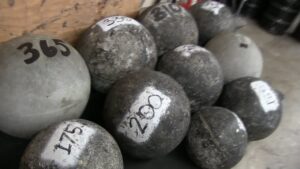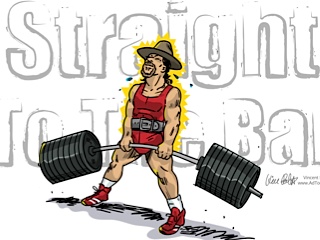In looking a bit more carefully at my diet for next year, I realised I need to work out my current energy expenditure before trying to gain a few kilos. Working out how many calories you’re currently burning up (and consequently how many you need to eat, just to maintain your weight) is a fairly straightforward process, beginning with your Resting Metabolic Rate (RMR).
Now, before you can plug in the numbers, there are a couple of things you’ll need to know. As well as your current weight you’ll need to know your level of bodyfat. There are several ways to measure this, though the quickest way to get a rough idea is using the US DoD formula I outlined recently.
Calculating your Resting Metabolic Rate (RMR)
As I’m sure you’re aware, the body requires a certain amount of energy just to keep ticking over. This is without doing anything at all, and it’s the first step in the process of determining how many calories you need to consume every day.
The RMR is often used interchangeably with the BMR, or Basal Metabolic Rate, and is close enough to the same thing for most purposes (the BMR actually refers to the energy required whilst sleeping, and the RMR is the energy required to simply rest all day). Perhaps surprisingly, the RMR makes up over half of your daily calorie expenditure. There are several equations for estimating this, although the most popular is perhaps the Cunningham Equation :
BMR (kCal/day) = 500 + (22 x LBM)
NB : LBM = lean body mass, and is simply your weight minus bodyfat.
For me, BMR = 500 + (22 x 84 x (1-0.16)) = 2052
The RMR may also be calculated using the Ravussin, Harris-Benedict, Nelson, World Health Organisation (WHO) and Schofield equations. A comparison of their effectiveness (at least for the measurement of obese children) can be seen here.
Activity costs
Now that you’ve worked out how many calories you need in order to lie around all day, it’s time to add a few for the various physical activities that make life more interesting. These are anything from walking around to doing physical work all day; the table below should give you a good idea.
NB : the weight training will be added in later, so ignore it for now.
Activity Factors:
1.2-1.3 for Very Light (bed rest)
1.5-1.6 for Light (office work/watching TV)
1.6-1.7 for Moderate (some activity during day)
1.9-2.1 for Heavy (labor type work)
Now, simply multiply your RMR by the activity factor (1.6 in my case).
2052 x 1.6 = 3273.6
For the workouts, multiply your bodyweight (in kg) by the hours you spend by the Metabolic Equivalent (MET) of the particular activity. The table below should cover the most common ones :
intense free weight lifting… 6
moderate machine training… 3
high intensity cycling… 12
low intensity cycling… 3
high intensity walking… 6.5
low intensity walking… 2.5
high intensity running… 18
low intensity running… 7
circuit-type training… 8
So, for a typical weight session for me it would be :
Cost of activity = 84 x 1 x 6 = 504 kCal
Add the values of these to the RMR x activity factor (above) and you’ll get an idea of how many calories you need on a workout day. For me, this is 3273.6 + 504 = 3777.6 kCal. Of course this is only for 4 days per week (in my case); the daily average is 3561.6. It’s actually a little lower than I thought, but that’s still a lot of food to get through!










0 Comments